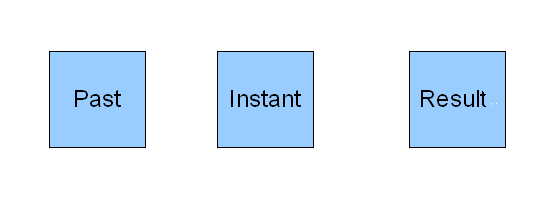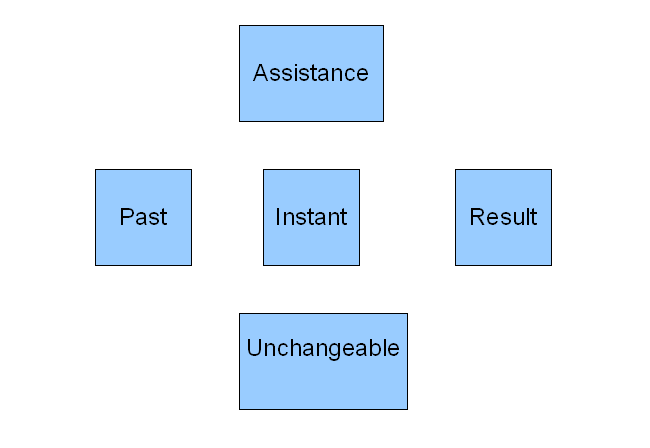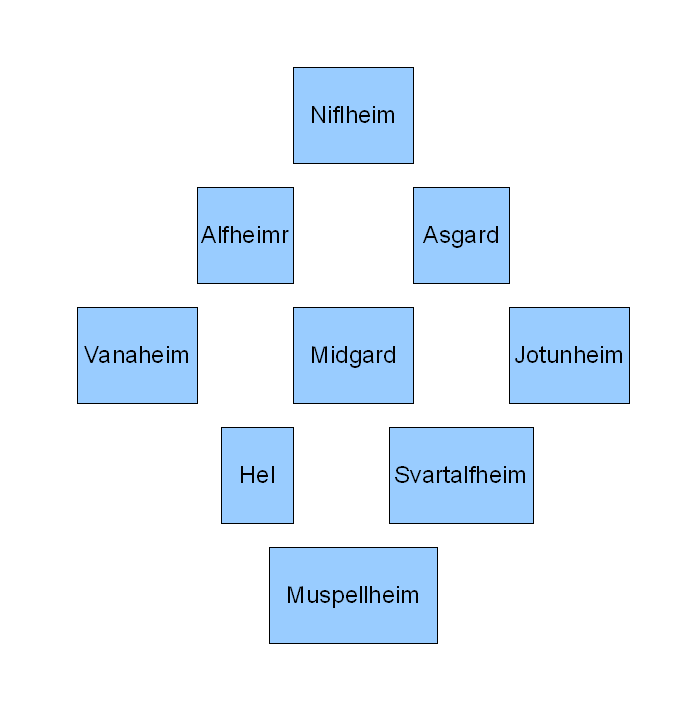Introduction
Using runes in divination when looking at them from a historical perspective is somewhat problematic, because while we see evidence of the runes being used for divinatory purposes, we have very little information about how they were used, other than that they were cast.
- The first place we see mention of the runes being used in divination is Tacitus’ Germania from the 1st century. In this text, he describes “signs” chosen in groups of three and cut from “a nut-bearing tree,” although the runes do not seem to have been in use at the time of Tacitus’ writings.
- The second mention we have of this is the Yinglinga saga, where during a Blot chips “fell” foretelling the demise of Granmar. There certainly seems some indication that these chips were something similar to runes like we think of them today.
- In Vita Ansgari by Rimbert there are three cases where “lots are drawn” to foretell the future.
In addition, divination is problematic because while the norse did have a concept of “destiny” and certainly the three norns wove the future, there’s also a strong philosophy within the northern european philosophy that one can have an impact on the future, and nothing is truly “destined” to happen, other than Ragnarok.
Nevertheless, there have been many attempts to extrapolate, primarily through self examination and experience, the system for divination with respect to the runes. It’s interesting that while Bind Runes have more historical information behind them, typically when one thinks of the runes, one thinks of divination.
Here I’m not going to go into an extensive discussion about how run reading works, for that I would recommend reading the “Introduction to Runes” document. Introduction_to_Rune_Reading where I address the magical concept of the runes, and how they fit within northern european beliefs. Here we’ll talk about the various layouts.
A Quick note about rune orientation.
As you read rune layout texts you’ll undoubtedly encounter some terms with respect to the position of “how the rune falls”:
- Reversed
- Merkstave
- inverted
All these refer to a given rune being “upside down” in the reading.
You may also encounter references to the angles runes have to each other, particularly if you’re doing a “dice cup” reading (see below).
Since we’re dealing with a situation where there is effectively no historical guidance with respect to the matter, we’re left to our own personal experience and feeling to make a decision. In my “tradition” I’ve concluded that there really is no such thing as a reversed rune, for the following reasons:
- There are several runes that cannot be inverted, including Gebo, Jera, Hagalaz, Nauthiz, Eiwhaz and Inguz (Ingwaz). They look the same one direction as the other, therefore they can’t be reversed. This constitutes 1/4 of your rune set.
- Runes started as an alphabet. We don’t think of our latin alphabet as having “reversed” characters with different meanings, so why should the runes be any different?
- Northern European philosophy centers around the concept of simplicity of purpose. The 24 runes provide an excellent set of “slips” for which to do reading, and to complicate things by increasing the number to 48 (2 X 24) makes readings significantly more difficult, especially when you consider that those that promote reversed readings generally do not use “it means the opposite” rule.
- There are enough runes that have significant negative connotation (Isa, Nauthiz, Hagalaz, and Dagaz), along with others that have warning signs that there isn’t really a need to artificially create a negative connotation set of meanings in the runes.
The Three Rune Layout
The three rune layout is perhaps the easiest, and sometimes the most useful layout to use. It basically consists of the questioner drawing three runes and placing them down in from of them.

In this layout we have three positions.
- The first position represents the past, the questioners history, and what “brought them here to the reading.” It can represent a persons past, however it may represent “why they are getting a reading.”
- The second position represents the current situation. For those familiar with Tarot reading, there’s an inclination to think of this as “The present” however it’s slightly different. The northern europeans had no concept of “right now” so much as “what’s happening right now.” The way to think of it is like a river. You can’t stop a river from flowing, however you can take a photograph of it, and look at it. The concept of instant is like that, it’s showing you a snapshot in time.
- The Result represents where you will end up if you continue down the current path you’re following. As we discussed before, Northern Europeans didn’t necessarily believe in a fixed destiny, however the norns did weave the future into the wyrd, and so this result effectively represents what will be woven into the wyrd if things don’t change.
When you speak with a majority of rune readers, this three rune layout is “pretty typical.”
I’ve made a personal modification, with absolutely no historical basis, but based upon my experience, and that’s to have the reader draw a fourth rune.
It’s easier to explain why I have them draw a fourth rune, rather than trying to explain what it represents.
Since we’re working under a philosophy that there is no fixed destiny, and we thinking about the tale of Schroedinger’s cat , which while not a historical tale by any stretch of the imagination, does point to the philosophy of “we cannot look at something without changing it.” In the case of a rune reading, you’ve given the questionner a glimpse of what may come to pass, and they are in the process of making decisions based upon this.
So this fourth rune is a reflection of this effect. It can represent what the questioner is thinking, it can also represent something else they should be considering, but aren’t right now. The point of this rune is to give the reading a fluidity with respect to the questioner’s thinking.
The Five Rune Layout
The five rune layout is similar to the three rune layout:

Here we see that we still have the 1st three runes, representing past, instant, and the result. However we’ve added two more runes:
- Unchangeable — This rune represents facts and circumstances that you cannot change, despite your efforts. The rune here represents items that you should not try to influence.
- Assistance — This rune represents the assistance you can get with respect to the issue at hand. It may point a direction to solve your problems, or what path you can take to change your result if you are dissatisfied with it.
A five rune layout can be helpful particularly if someone is asking a question related to solving a problem that they are having difficulty with.
The Seven Rune Layout
The Seven rune layout changes the way we lay things out significantly:

Here we’ve moved drastically far away from the three and five rune layouts. It is also the 1st layout where a given “factor” is not defined by one, but by two runes.
- The first two runes describe the problem that the questioner is dealing with.
- The second set of two runes (3 and 4) describe the past, and what circumstances lead to the problem that the questioner now has.
- The next two runes (5 and 6) represent the advice of the gods to resolving the problem in the most advantageous way possible.
- and the final rune represents what will result if the advice is followed.
This type of cast definitely takes some work to get good at, because it goes beyond just taking a specific rune and determining it’s meaning. Here we’re talking about having to relate two runes together to a specific factor. While doing this type of reading can be difficult, it also is a type of reading that helps the reader develop his skills.
The Nine Worlds Layout
The “nine worlds” layout is extremely complex, and can rarely be fully understood in one setting. Its a layout that’s truly designed for exploring your journey, and where you are headed. It is also a requires a significant analysis of how the runes relate to each other:

The best approach to examining this layout is to start in the center, with Midgard (our world) and work your way out in concentric circles.
Midgard – This represents You, and your state of being.
Alfheimr, Asgard, Hel, andSvartalfheim — These represent the influences on the questioner with respect to what is being asked. Alfheimr and Svartalfheim represent influences of a personal nature, directly relating to the questioner, Hel and Asgard represent influences that are more “worldly” than specifically related to the questioner.
Specifically these positions are as follows:
Alfheimr — Mental influences. Family matters. Messages of Huginn(one of Odin’s Ravens);directions in which you should plan. What will help you. Paths to help you realize influences from Àsgard.
Asgard — Higher influences. Nature of relationships with the divinities. The veiled branches of the question. Matters of honor, positive (active) influence from past states of existence (“incarnations:)–ørlög. Individuality. Highest plane. Higher self. Spirituality.
Hel — Hidden or suppressed instinctual desires. Nature of automatic functions or behaviors. The hidden route of the question. Negative (passive, restrictive) influence from pasts states of existence&emdash;ørlög. Destructive part of the Feminine, hidden fourth aspect of the moon; the devouring part of the mother; the half-alive half-dead daughter of Loki, half black, half white.
Svartalfheim — Creative emotional influences. Money matters. Messages from Muninn&emdash;things you should reflect on. Paths to realize influence from Hel. Sensation (Earth). The Dark Elves are smiths, like Volund, working with minerals, taking base materials from the earth and transmuting them into higher materials.
Vanaheim, Muspellheim, Jotunheim, and Niflheim — These represent the state of the universe surrounding the questioner.
These positions are as follows:
Vanaheim — Promotes growth. Erotic relationships. Persons of the opposite sex. Balancing influences. Forces of continuity, structure, and well being. Feeling (Water).
Muspellsheim — State of vial energies, that which vitalizes you. Active influences from outside. Things tending toward activity.
Jotunheim — That which confuses you. That which may be left to chance. Forces pressing for change. Realm of crisis. Disruptive, raw masculine forces of the unconscious; the destructive male urge; the chaotic part of the self.
Niflheim — That which resists you. Passive or restrictive influences from the outside. Things tending toward dormancy. The deepest part of the shadow in the unconscious. Nifelhel of Niflheim means literally “fog world”. Fog is an intangible, insidious state between water and air. All the rejects of the conscious get deposited here. It is the place from which conflicts originate.
As you can see, there’s a lot to “process” here, and the nature of determining how the meaning of a given rune fits within a specific world can be a difficult task indeed!
Something interesting to note is that if you take the nine worlds, and lay them out in this format, you end up with the 8 compass points. One could certainly use that analogy when looking at the runes when you cast them.
The Dice Cup
The “Dice Cup” may in fact be the most “historically accurate” of all the types of readings that are discussed here. However, it also has a certain level of “fuzzy logic” that may not sit well with those who are more used to tarot, i-ching, or other types of divination.
The concept behind the dice cup is that the questioner reaches into the bag of runes, and grabs out as many as they feel appropriate and tosses them on the mat. Now you need to look at the runes, and how they placed themselves in groupings, and how the position of these runes relate to each other. One can also look at the runes that are either closest to the center, or closest to the questioner, and do an analysis in that direction, with those being closest to the questioner or center being “more important” than the outlyers.
This type of reading certainly has a lot of flexibility to it, however, it also is likely to take a lot of discussion between the reader and the questioner, as discussed in my Reading 201 class. Since you don’t have a distinct “path” to follow, you have to trust your judgement, and the judgement of who you are reading for.
